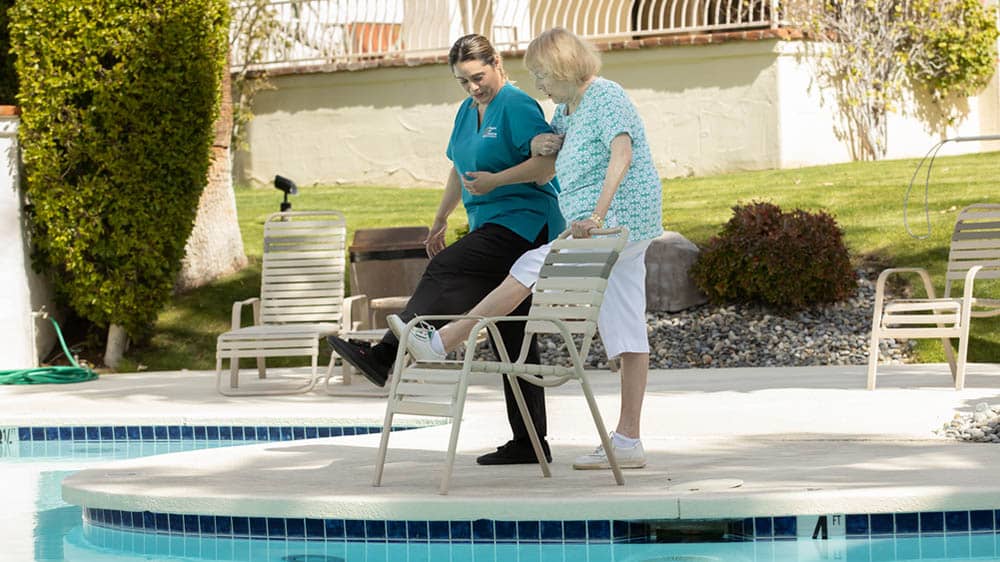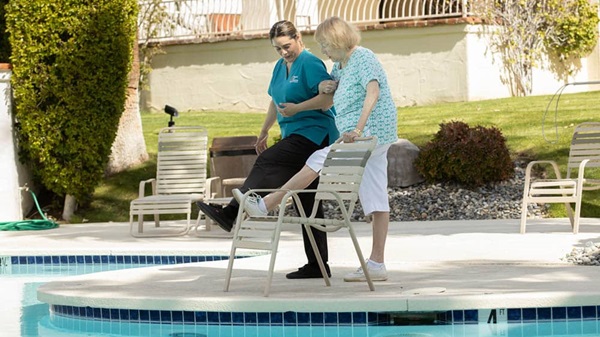

Aging Gracefully: Exercise Strategies To Stay Active in the Golden Years
While it is true that seniors have earned the right to take it easy after years on the job, raising families, and welcoming grandchildren, it doesn’t mean they don’t need to keep their bodies moving to maintain good health and mobility for the future. According to the National Institute on Aging, studies show that “taking it easy” can be risky. Often, inactivity is more to blame than age when older people lose the ability to do things on their own. Lack of physical activity and regular exercise also can lead to more doctor visits, hospitalizations, and the need for more medications for various illnesses.
As we age, we lose muscle and bone mass, resulting in loss of strength and worsening current health problems such as diabetes and high blood pressure. Physical activity and exercise can slow these problems and encourage brain health and socialization.
Tips for Encouraging Your Aging Loved One To Exercise
While one might want to simply sit and relax with a good book or binge-watch a favorite television series, it’s important that seniors get regular exercise. You can help your aging loved one by offering suggestions for activities suited for them and their current physical health. Some ideas include:
- Walking: Walking is not only good for the body but also for the mind. In addition to fresh air and exercise, walking allows your loved one to meet new neighbors or catch up with familiar ones. And a regular walking routine can be effective in preventing falls.
- Swimming and Water Exercises: Swimming can be a way to increase flexibility, work the muscles, and strengthen breathing. Water exercises like water aerobics can help get the work in without high-impact wear and tear on joints and bones.
- Dancing: When your senior joins a dance club and takes a twirl around the dance floor, they are improving their balance and endurance. Dancing can even decrease their fall risk. Plus, it’s a great way to mingle with others with similar interests.
- Gardening: If your senior likes to get their hands dirty and see things grow, help them plant a small garden. This has many benefits, including having fresh vegetables and fruits right at hand.
For more ideas, log on to AARP, where you’ll also find online exercise videos suitable for almost any situation.
First Things First: Physician Check-In
Before your senior embarks on an exercise program, it is essential to check with their doctor to get a realistic view of your senior’s capabilities and limitations and ensure that the doctor is on board with the plan.
Make a Plan
All good initiatives should start with a plan. Ask your loved one what they hope to accomplish. Would they like to be able to shop on their own? Have they always wanted to try yoga or tai chi? Do they want to learn to swim or learn a new dance step? Would they like to meet some new friends who share the same interests? Your loved one’s answers will help narrow down and refine the plan and may even help motivate them to keep going if their interest wanes.
How Much Is Enough or Too Much?
The U.S. Department of Health and Human Services (HHS) states that for the best health benefits, adults should plan to have:
- At least 150-300 minutes (2½ to 5 hours) of moderate-intensity aerobic physical activity each week;
- OR, 75-150 minutes (1 hour and 15 minutes to 2½ hours) of vigorous-intensity aerobic physical activity each week;
- OR, an equivalent combination of the two.
The HHS notes that when beginning an exercise program, adults should start slowly and build to their goals.
Right at Home Can Help
Right at Home provides a wide range of in-home care services for seniors and adults with disabilities, including helping your loved one stay active. Our caregivers can provide support and encouragement in meeting your loved one’s exercise goals, whether shopping, taking walks, cleaning, or exercising indoors. For more information, use our office locator to find the nearest office and ask for a FREE in-home consultation.







